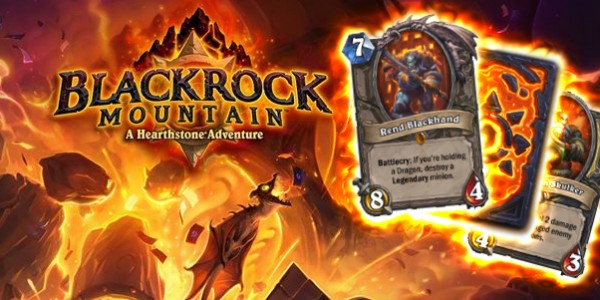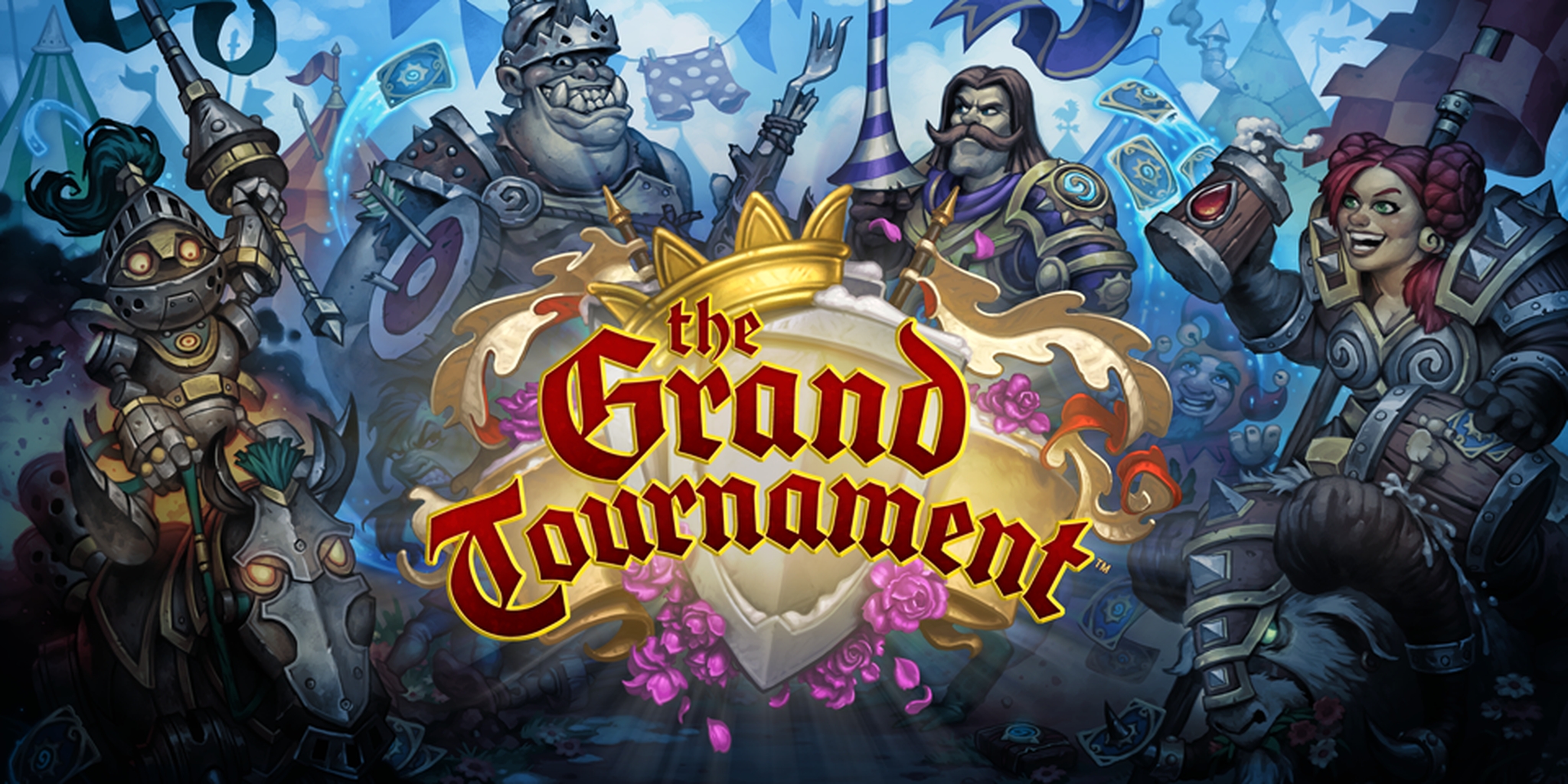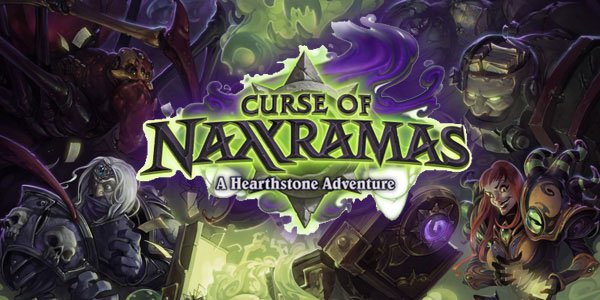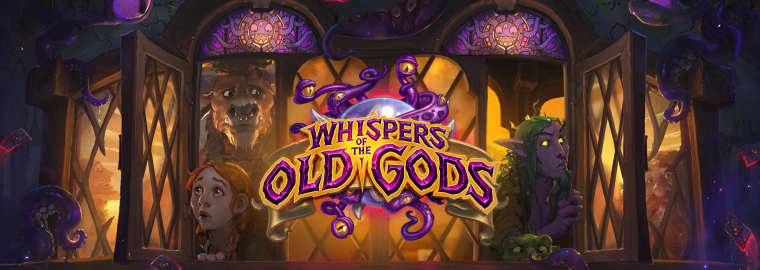4 Reasons Why You Want To Quit Playing Hearthstone
Blizzard’s smash hit Hearthstone brought Collectible Card Games (CCGs) into the modern era, creating a fun and addictive title that attracted both card game veterans and newcomers alike, all while being one of Blizzard’s first free-to-play titles. Due to its incredible depth and accessibility, its ascent to the upper echelons of the top grossing games charts was nearly instantaneous, eventually finishing off the year by stealing the show at Blizzcon 2014 as the most popular game at an event which also featured World of Warcraft and Starcraft 2 World Finals. Blizzard doubled down on their new hit game, promising and delivering multiple releases the following year to keep fans coming back.
For a long period of time, Hearthstone simply could do no wrong. Even between releases, they continued to have a strong showing in top grossing and download charts on mobile, while simultaneously being a consistent top-5 streaming game on Twitch. However, Hearthstone eventually hit a point where the mechanics and metagame were becoming stale, and Blizzard found itself unable to keep things fresh without introducing a major shakeup. Since then, Hearthstone has been on the uneven ground, hemorrhaging players and ceding ground in the charts, despite being essentially the same game it always was. There are several reasons why this happened that I’ll explore in detail, as well as what Blizzard is doing to try and course-correct with their most recent release.
1. It Has Become Too Complicated
When Hearthstone first came out, it was lauded for the simplicity of its mechanics, especially when compared against other CCGs which were struggling to find hold in the market. While games like Magic The Gathering Online had been around for years, they required players to learn and master dozens of mechanics and thousands of available cards to really understand and succeed at the game. When Hearthstone first came out, there were only a handful of core mechanics, most of which were very straightforward and easy to explain. And since there were only a few hundred cards total in the game, there wasn’t an overwhelming block of knowledge that needed to be gained to compete as a casual player.
Over time, the most dedicated segments of the player-base refined and mastered the most powerful strategies the game could have given the available cards. Just as the metagame was starting to stagnate, Blizzard stepped in and introduced several new mechanics to the joy of the most hardcore fans. In a flash, they were back to work picking apart every possible strategy trying to perfect their decks and gain an edge over their opponents. Again and again this cycle persisted, with Blizzard staying just ahead of its ravenous audience, giving them wilder and more intricate mechanics to try and master.
But while the hardcore users and professional scene flourished, the casual scene began to sag under the weight of the wide array of mechanics now in the game. Certain abilities that were once restricted to a single class were now in several, and you could even play cards normally not allowed in your deck by using certain combos. Nowadays, if you are coming in as a new player, you go to the collections page and no longer see hundreds of cards, but thousands that can be found in packs or by crafting. While veterans who have been building their collection gradually over time demand more and more, the casual players find themselves desperately looking for a way to just keep up.
When the game gets as complicated as it is now, it’s no longer fun and exciting for a large segment of players. Any successful PvP game has a deep pool of strategies to pick from, but when the game reaches the point where you never know what to expect from game to game, the mastery curve becomes so steep it’s not even worth trying. Having to research online how to beat a certain deck can be fun once, but having to do it constantly just to win any games quickly becomes exhausting. Eventually, it becomes too much, and players simply stop coming back.
2. Being Lucky Matters More Than Playing Well
Casual players certainly struggle with the sheer complexity of Hearthstone in its current state, but plenty of games thrive even without a casual audience. But the rapid feature creep that Hearthstone has experienced over the last few years has exacerbated one of its biggest flaws, leading to many dedicated players calling it quits as well: randomness.
Hearthstone has always been a game with a heavy dose of randomness as part of its formula, and a lot of the mastery curve is based around learning how to win even when the cards don’t draw in your favor. Early on in the game’s lifespan, with many different decks viable for play, this randomness was fun for players, as every match felt winnable, with the end result being determined by how well they played. As new cards and combos were introduced, however, the skill gap between players became more apparent, with the top level players becoming more thoroughly dominant than ever before. Finally, Blizzard took action, nerfing many of the most potent decks in an attempt to level the playing field for players who hadn’t made quite the same time investment. However, in doing so, they had set a dangerous precedent.
No longer would the most dedicated players be able to lord over the ranked ladder with their highly refined playstyles, but the flip-side to this was that the game lost a significant chunk of its depth. Instead of players defining the strongest elements of the metagame, Blizzard was now designing the game around specific strategies and announcing them to everybody. Sure there was still a little experimentation, but many found that if you did not use one of a handful of strategies, you basically stood no chance at all. On top of this, each of the popular decks were essentially hard counters to one of the other popular decks, making each match feel like it was over the moment the decks were revealed at the start of the game. It seemed Blizzard was attempting to make the game better for both casual players and hardcore ones by decreasing the maximum possible skill gap, but they ended up draining the fun from both sides of the player base instead.
“There were 3 main deck types... A lot of the time players felt like the game was literally over when the two characters were shown at the start of the game.”
What had once been games that resembled careful chess matches had devolved into what felt like a series of coin flips, with the actual plays each side made having little impact on who would win or lose. For any game which relies on PvP to be successful, this is essentially the first nail in the coffin. When your card collection is mostly full and you’ve achieved a solid ranking, any further progression is all mental: how to avoid mistakes you made in a certain matchup, how you can better predict what cards your opponent will play, or how you can build a new perfect deck.
For a long time, what made Hearthstone so successful was the degree of freedom it gave players to learn and grow, and to actually see themselves improving in their play. When the ability to master the game was limited heavily, even professional players had no choice but to give up on their beloved game. Blizzard needs to embrace that their game is complex and that having an incredibly high skill ceiling helps it, not hurts it. Only when skill is the ultimate decider of games, rather than random good luck, can it thrive and grow.
3. Lack of Social Gameplay Persisted
One-versus-one PvP games are some of the best at capturing a player’s attention and retaining them due to the intense competitive feelings they can take advantage of. There are few things better than facing off against an opponent and feeling the sweet taste of victory after you crush them underfoot. However, where many of these types of games tend to struggle is their lack of cooperative play, which encourages them to keep playing even when they are struggling in the competitive modes and builds a stronger community around the game.
To put it lightly, Hearthstone’s social features are extremely lacking. You can play casual matches with your friends, given that you’ve added them, and that’s pretty much it. There are no in-game groups or community aspects, leading to communities forming almost exclusively in the chats of Twitch streamers. And while having these communities is certainly very nice, there is little to actually keep people tied into the game itself -- they can come and go as they please, and even live vicariously through the streamers instead of playing themselves. And perhaps most importantly, if their favorite streamer is displeased with the direction of the game, a lot stands to be lost as many players’ loyalties lie not with Blizzard, but with these personalities online.
There was even a glimpse at how successful cooperative play could be during one week where players had to team up to complete a special challenge. This was a massive departure from the regular gameplay, and clearly required a lot of technical and design investment to get functioning at all. The end result was a hit with players, who came together in a whole new way, reaching out to make new friends and craft strategies to best this difficult task. Unfortunately, despite being wildly successful, this event never blossomed into anything greater, and hasn’t been touched since.
It is easy to say that social groups and features just don’t make sense in a 1v1-centric title, but other mobile titles, specifically Clash Royale, have proven that it can be done. In fact, not only do these social features help with forming communities, but can be leveraged to increase retention and revenues significantly. Everything from gifting to clan events helps players feel like they are part of something and brings them back week after week to take part in this cooperative events.
4. Keeping Up With The Meta Has Gotten Too Expensive
Hearthstone’s initial global release was absolutely incredible, as it rocketed up to 10 million registered players in a matter of weeks. Cross-promotion from other Blizzard games was helpful, but some of the most impactful advertising occurred somewhere Blizzard could never have expected: the channels of Twitch streamers who played completely unrelated games. Some of the biggest League of Legends and Counter-Strike personalities would get in a game or two of Hearthstone between their normal matches, and lauded Hearthstone for its strategic gameplay and excellent value. They didn’t have to spend a cent to get started, and there was rarely if ever any pressure to buy additional packs, due primarily to the rarest cards in the game not being necessary to build a solid deck.
And not needing rare cards is more important than you might imagine, because getting the most powerful and elusive cards is essentially impossible without ponying up some cash. Though the true numbers have never been revealed, it is estimated that your chance of getting a Legendary rarity card (the highest available in Hearthstone) in any given pack is approximately just 5%. On top of this, distribution rates appear to be completely random, so you can easily get duplicates when opening packs, which have very little value compared to receiving a card new to your collection. While it’s true you can earn packs for free by winning matches, the amount of investment needed to get Legendary cards is massive, no matter whether it’s gained through time or money. For a long period of time, these factors kept the grind fun and exciting as players methodically searched for new ways to optimize their decks, but more recent expansions have flipped this mechanic on its head.
In their desperation to build a healthy metagame, Blizzard has turned to Legendaries as a way to shape the direction of the game. Essentially, they create a series of cards which are so overwhelmingly powerful that they entirely define a style of play, and then the metagame becomes a process in determining which cards work best to enable these mighty Legendaries. From a balance perspective, this has been a revelation in a game which generally has had only a handful of viable decks available at any given time. But while this might work pretty well from the perspective that it is more clear what you need to make a deck, and many strategies have comparable win rates, it has a massive potential downside: what do you do when you don’t own the Legendary cards?
In short, you either suffer a lot of losses, or you pay through the nose to get your hands on these valuable cards. During the initial iterations of this design strategy, Blizzard attempted to solve this conundrum by providing straight-forward ways for players to get vital Legendary cards with their “Adventures” updates. These single-player missions rewarded the player with certain cards for completing a series of boss battles, providing an interesting challenge to earn powerful cards. Recently, however, they’ve cut back heavily on Adventures, moving more towards a standard CCG monetization model of releasing mostly expansions, which leads to more Legendaries needing to be acquired through opening packs.
Blizzard made this decision deliberately, prioritizing the large high-paying sector of their audience who are more than willing to hunt for all of the Legendary cards no matter the cost. So far, it appears this change of direction is paying off, as high-level players are applauding Blizzard for opening up the metagame and Hearthstone is getting more views on Twitch than ever before. It has, however, come at the cost of the more casual players who scoff at investing $100 or more up front just to be competitive (and that’s if you’re lucky). It’s still too soon to tell the impact these decisions will have on the game’s growth and revenue in the long run, but as of now they are back to getting more press and pleasing a large portion of their fans, so this path may end up working out for Blizzard.
The Road To Recovery
A lot of people may have quit (or ragequit) Hearthstone, but not all hope is lost, and Blizzard certainly isn’t giving up. After forcing a small number of specific strategies down their fans’ throats for months, they are finally opening up the game to brand new styles and letting their players figure out the best ways to play. This important course correction, combined with a newfound priority on money-making expansions over smaller updates, could lead to the upswing in both engagement and revenue that Hearthstone desperately needs to continue growing.
The trials that Hearthstone has faced recently are not exclusive to it -- any game that tries to appeal to both hardcore and casual fans toes a very narrow line that can be difficult to make work. As this is a relatively new space for Blizzard to be operating in, it is expected there will be some ups and downs while they figure out the best way to approach the growth of the game. Only time will tell if they can beat out to some of their up and coming competition, but it’s good to see they are at least trying to recover from this recent downturn and, given their outstanding pedigree, I have full confidence we’ll see them rise back to the top again sometime soon.











